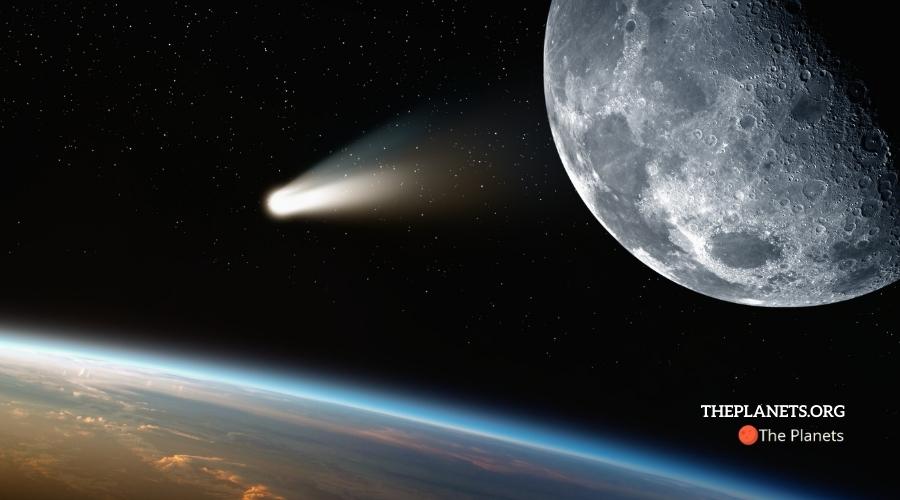
Armageddon and other famous movies showed the disasters that could occur when comets hit the Earth or came close to the planet. Those disasters ranged from end of the world situations to buildings catching on fire and oceans flooding. Astronomers often call comets dirty snowballs because they primarily consist of ice or snow mixed with debris. Comets can move through the atmosphere and even come close to the Earth without damaging it. This article will help you learn what comets are and the materials found in them, which you can share with others as you look at the stars.
Parts of a Comet
A comet is more than just a collection of debris. Comets consist of three primary parts or areas: the nucleus, coma and tail. The nucleus is the center of the comet and the largest portion of the object. It can range in size from around 100 meters to more than 40 kilometers. The portion that surrounds the nucleus is the coma, which helps the comet stay in an elliptical orbit. On the end of the comet is a tail, which you can often see through a telescope as the comet comes close to the Earth. Each part features a mixture of materials.
Debris and More
Comets consist of different types of debris that the object picks up as it moves through space. This includes both ice and snow, which it can pick up due to the cold temperature in the environment. Comets can also consist of rocks and sharp pieces of debris that it gains from the debris that planets produce. As a comet orbits around a planet, it can absorb some of that debris and pull it into its nucleus. Most comets also contain a large percentage of dust from both space and surrounding planets.
Nucleus
The nucleus of a comet is the most important part of the object. It typically consists of frozen gases that include ammonia, carbon dioxide, methane and carbon monoxide. Depending on how far the comet travels and which planets it passes, it may pick up other types of gases. Mixed in with those gases are chunks of ice, snow, dust, rock and other debris. The core of the comet is a frozen substance that is similar to a rock because it’s hard and sharp. Comets can have different percentages of rock and ice too.
Coma
You can think of the coma of a comet as a blanket wrapped around the nucleus. As the comet moves through space, it gets closer to the sun, which produces heat that causes the coma to separate from the comet. This heat also breaks up the nucleus and turns it from a solid and rocky substance to a series of gases that escape from the inside. Most comets contain a large concentration of water and oxygen too.
Tail
Comets develop tails as they move through space and orbit around planets. The sun produces radiation that causes the dust in the comet to slide from the interior to one end, which forms the tail. This tail features both gases and some of the debris from the nucleus. It may contain nitrogen and carbon monoxide also. An ion tail occurs when the comet has dust that becomes ions. Comets can release dust and other particles that escape from the tail.
Halley’s Comet
One of history’s most famous comets was Halley’s Comet. Ancient Greeks spotted a comet around 468 BC that astronomers now believe was likely Halley’s Comet. Records indicate that people living in China observed the comet sometime around 240 BC too. In 1835, an Irish astronomer used a telescope to get a better view of the comet, which he used to sketch the size and shape of it. Halley’s Comet is famous because it’s one of the only comets that follow a regular schedule. It returns roughly every 75 years and is the only comet that you can view from Earth without a telescope. Like other comets, Halley’s comet consists of ice, debris, rock and gases. The makeup of specific comets can vary based on their age and their paths through space. Comets can have larger percentages of gas and other particles based on what they pick up on their travels.
Check out our separate post on comet facts if you want to expand your reading on comets further!